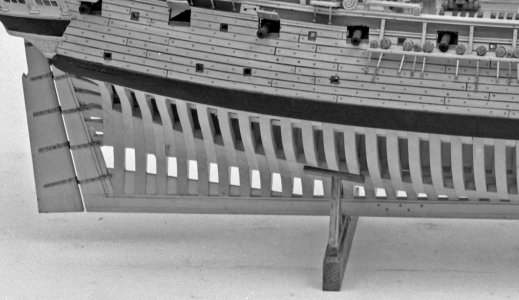What a wonderfully honest and relatable post, Smithy. Thank you for sharing! I couldn't help but smile at the SABLE reference. (I might have a similar situation with reference plans and modeling ideas.)I was thinking this morning about my vast library of as yet unread books. I don’t have many models in the cupboard but my books are definitely SABLE (stash acquired beyond life expectancy)
Anyway, I sort them into the traditional categories of fiction and non fiction and that thought brought me back to this thread. I generally have at least two books in progress, usually half a dozen. I’ll always have a mix of fiction and non fiction. I’ll read a chapter or two then break off to make a drink, play with the dog, talk to someone. Then perhaps I’ll pick up another volume. Often though, I become assimilated by a good one. Resistance is futile and I’ll read it without stopping, through the night if necessary. On the other hand, if the book in my hand bores me, I hurl it away and try another one. Life’s too short to be bored just to finish what I started.
Reading is my principal hobby. The same pattern is discernible in my model making. I currently have two models in progress. One build is non fiction where accuracy matters to me. I read reference books for this one. The other is fictitious which enables me to write the story for myself.
And then there are those books which seem to be fiction, yet contain truths which have chanced my life. I suppose they have an equivalent in a model of an imaginary subject rigged with attention to detail?
I’m rambling a little, this is almost a ‘stream of consciousness’ post. My original point was going to be that there are so many very different books on my shelves, and so little time that even in retirement, time available is finite. I have some magnificent reference books, huge tomes that would take months to read - and perhaps keep me from a handful of those life changers.
Oh yes, there are the other hobbies too, including writing well in the glorious English language. They are all seducing me from the workbench.
Oh dear, I can’t spare the time right now to edit and properly conclude this post. And sometimes I simply don’t have time to make models to the best of my ability. Sometimes I bash them together as fast as I can. Sometimes, sometimes I even hurl them away and move on.
In my world, life is too short for the persistent pursuit of perfect accuracy. I don’t ever aim for perfection - ‘good enough’ is good enough for me.
Now, gotta go!
Your analogy between books and model building resonates. Just like reading, our approach to modeling can vary from immersive deep dives to more spontaneous page flipping, depending on what calls to us in the moment. There's nothing wrong with sometimes chasing detail and other times just enjoying the build without overthinking it. That said, while I fully agree that life’s too short to be bored or shackled by perfectionism, I also believe that aiming for accuracy, when that’s what excites us, isn’t always about chasing perfection. For many of us, it’s simply another kind of fun, a puzzle to solve, or a story to retell as faithfully as we can. And yes, sometimes we "throw the book across the room" when it stops being enjoyable, too!
Whether we're crafting fact or fiction, or blending both with artistic license, I think it’s the love of creating that keeps us all coming back to the bench. Now, if only I could train my books and kits to shelve themselves properly…








